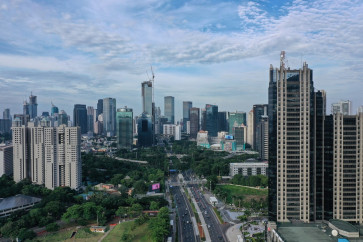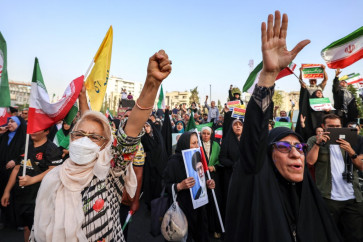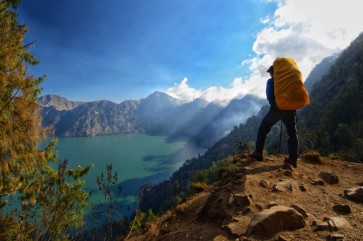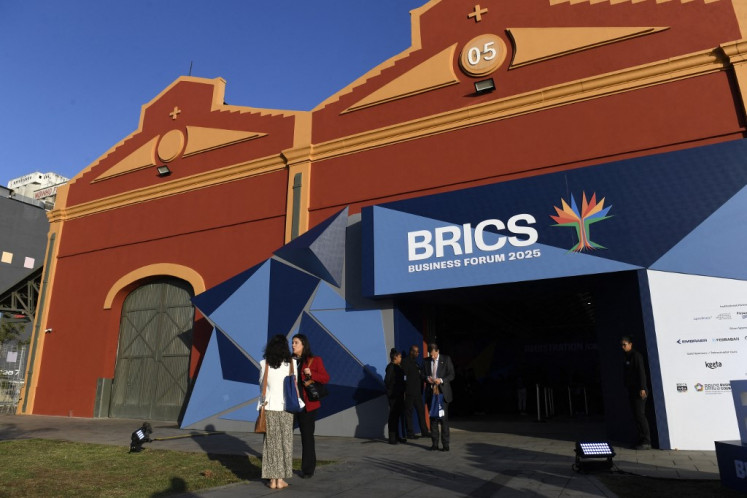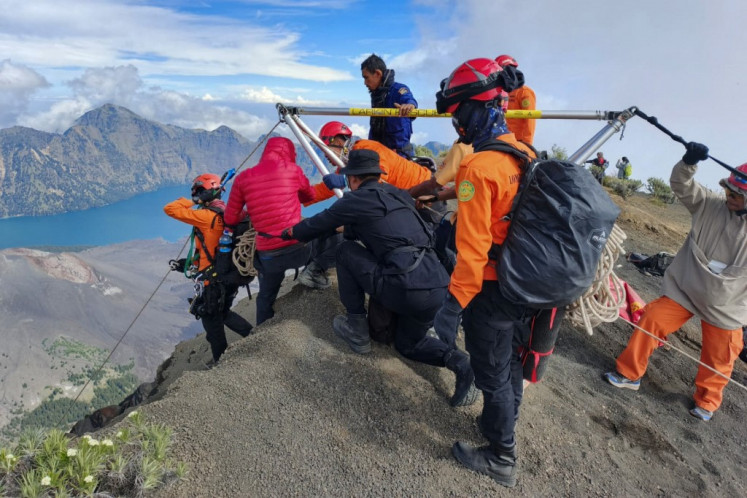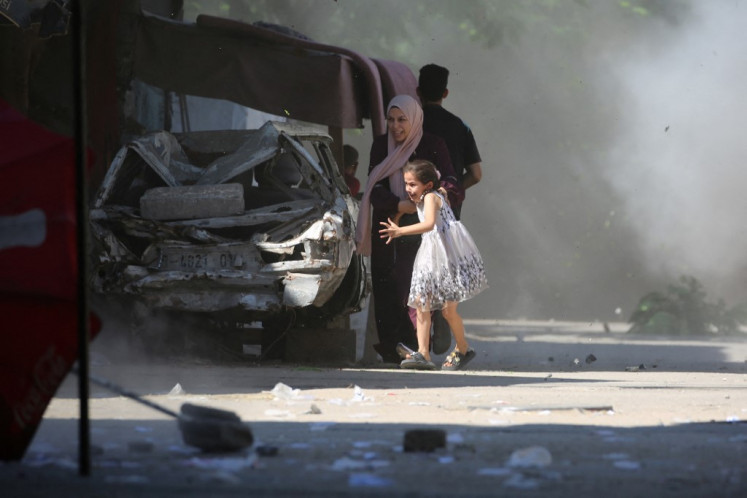Popular Reads
Top Results
Can't find what you're looking for?
View all search resultsPopular Reads
Top Results
Can't find what you're looking for?
View all search resultsMalacca Strait favorite route for illicit travel
A recent report from the United Nations High Commissioner for Refugees (UNHCR) reveals that the Malacca Strait has become a favorable alternative route for boat people to reach Australia, while they are also crossing some regions of Indonesia and Malaysia
Change text size
Gift Premium Articles
to Anyone
A recent report from the United Nations High Commissioner for Refugees (UNHCR) reveals that the Malacca Strait has become a favorable alternative route for boat people to reach Australia, while they are also crossing some regions of Indonesia and Malaysia.
After arriving in Sumatra, refugees go to Jakarta by bus and then fly to Makassar or Kendari to board other boats to reach Australia, according to the report.
'Such a journey [via Malacca] has consisted of day-long trips on boats and traverses one of two routes, from Klang, Malaysia to Medan, Indonesia, and from Johor Baru, Malaysia, to Batam or Tanjung Pinang, Indonesia,' the report said, adding that the refugees usually use boats with capacities of between five and 55 people.
The UNHCR interviewed several refugees who tried the new routes and found out that they paid money to smugglers to let them travel.
The costs varied depending on the destination, on whether the passenger only went as far as Indonesia or wanted to be taken to Australia. The price per adult was generally between US$300 and $700 to Indonesia and from $1,500 to $3,000 to Australia.
Children travelled for half price, or as part of a family package.
It was reported that illegal migrant workers from Indonesia also travel through the Malacca Strait.
According to the UNHCR, hundreds of Rohingya people previously traveled using two routes: over the Bay of Bengal or the Andaman Sea. However, these people have chosen the Malacca Strait as their new route for safety reasons.
After arriving in Sumatra, many Rohingya refugees try to reach Australia by traveling to Jakarta by bus and then fly east to Makassar or Kendari, where they mean to board boats to Australia.
However, their attempts often fail because of weather, engine failures, or interception by Australian authorities. As a consequence, they get returned back to Indonesia and must repeat the effort.
Myanmar's minority Rohingya Muslims are among the most persecuted people on Earth.
Myanmar's government views the estimated 1.3 million Rohingya ' who live in dire, segregated conditions in the western Rakhine state ' not as citizens, but as illegal migrants from Bangladesh encroaching on scarce land.
For that reason, they say the Rohingya ethnicity does not exist.
As many as 793 Rohingya people were registered with the UNHCR in Indonesia, of which 738 have been recognized as refugees. Some of them had intended to travel to Malaysia before going to Australia, but their boat was stranded in Indonesia because of weather.
Australia is currently applying a new policy for asylum seekers, noting that those who had registered with the UNHCR in Indonesia after July 1 would no longer be eligible for resettlement in Australia.
Australia will continue to resettle some refugees who registered earlier, but it has cut the number of allocations, making for a much longer waiting period in Indonesia before being resettled. Australia has also limited the quota of refugee places available for people coming from Indonesia to 450 a year, from the previous 600 places.
As Indonesia has yet to ratify the 1951 Convention Relating to the Status of Refugees and 1967 Protocol because of fears of being flooded by refugees from outside, the country has only become a transit zone for refugees who want to reach Australia.
As the end of November, there were 6,348 asylum seekers registered with UNHCR Jakarta. Those people were mainly from Afghanistan (60 percent), Iran (9 percent), Somalia (6 percent) and Iraq (6 percent), the UNHCR reported.
Meanwhile, the number of refugees registered with UNHCR Jakarta was 4,456. Those from Afghanistan represented 38 percent, while 18 percent were from Myanmar, 8 percent from Sri Lanka and another 8 percent from Somalia.
Hence, in total there were 10,804 refugees and asylum seekers in Indonesia. Around 30 percent of the total number were children.
Currently around 32 percent of the total number of refugees and asylum seekers in Indonesia are living in 13 immigration detention centers across the country.


